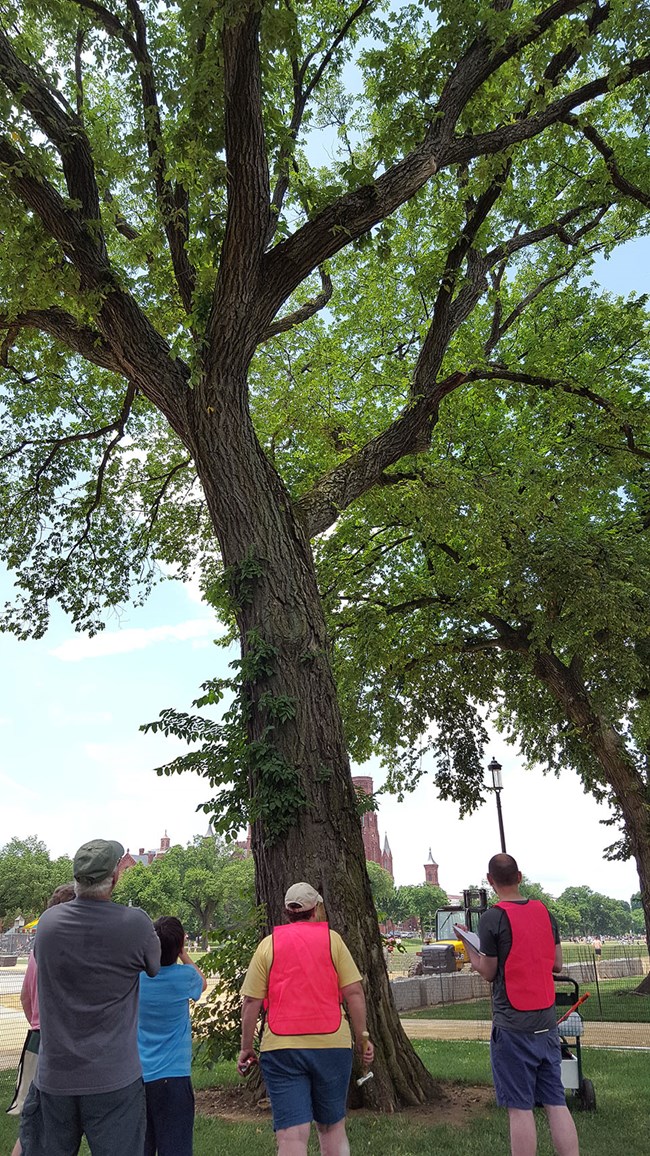Last updated: February 23, 2018
Article
TLC for the Mall’s Elm Trees

Nina Bassuk
The American elm trees that line the Mall suffer many of the same stresses as the turf panels. Namely—high visitor use. The large numbers of people that enjoy the shade and beauty of the elms over the years has led to soil compaction and chronic wear and tear. Special events and Dutch elm disease are also stressors to the trees.
But now a new project led by Dr. Nina Bassuk at Cornell University, is underway to examine the elms and the soil they’re growing in. The project, facilitated through the Chesapeake Watershed Cooperative Ecosystems Studies Unit (CW CESU), will assess current growing conditions and tree health, make comparisons with historical data, identify growing environment challenges, and then recommend best practices to fix growing deficiencies and define management objectives for future tree health.
Already, the Cornell team has collected soil samples in 49 locations distributed across the Mall’s 23 acres of elm panels. And in 2017 those soil samples were evaluated for a variety of factors including pH, organic matter content, root growth limitation, soil texture, and soil respiration. The Cornell team also looked at tree root development--most of which is at 18 inches--using ground penetrating radar that peers as much as 3 feet down into the ground.
Early results for soil compaction show that of 49 soil sampling sites, the best 5 had usable depths (soil depth that can be penetrated by roots) up to 11 inches, everything else had less. In other words, the soil is so compressed there’s almost no place for new roots to grow and existing roots to expand. Despite this, most of the elm trees are rated as being in good condition, meaning they had acceptable leaf quality, branching structure, little or no disease or insect damage, and healthy root flare. But in the long term, something (hopefully the soil) needs to give.
Park Turf Management Specialist Michael Stachowicz has been part of work to restore heavily compacted soil around elms in a limited section of the Mall between 3rd and 4th Streets. There, he oversaw landscape contractors who used a compressed air tool called an “air spade” to create a spoke-shaped pattern of small trenches radiating out from each tree. The air spades remove compacted dirt from tree roots without damaging the roots, and the foot wide trenches stretching to the tree drip line got filled with compost and uncompacted soil. A similar technique was used in a limited area of the cherry tree grove between the Tidal Basin outlet bridge and the Jefferson Memorial to help revitalize the soil there too.
But the park strives to learn more about the best and most comprehensive ways to care for their arboreal charges and the Cornell team’s project is eagerly awaited. Stay tuned.

This project is facilitated by the Chesapeake Watershed Cooperative Ecosystem Studies Unit (CW CESU). The CW CESU promotes stewardship and integrated ecosystem management of natural and cultural resources in the Chesapeake Watershed through collaborative research, technical assistance, and education. To do research with CW CESU, please contact Danny Filer at 301-689-7108.
